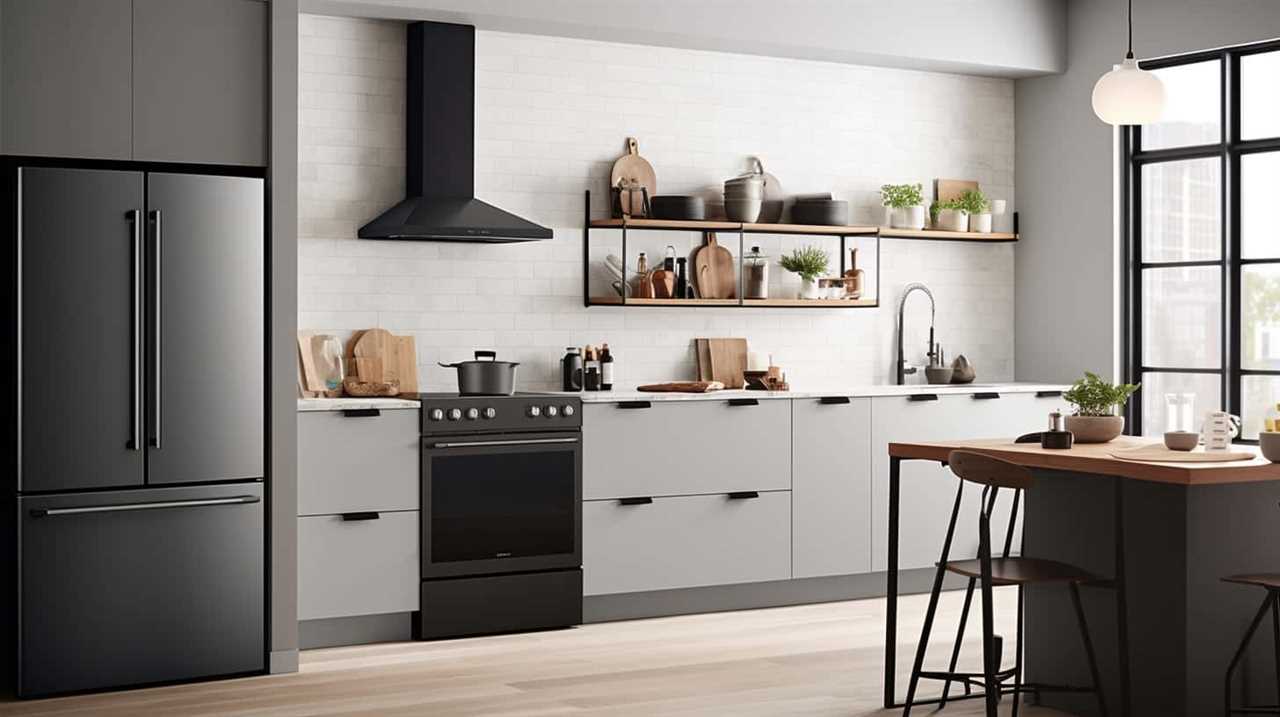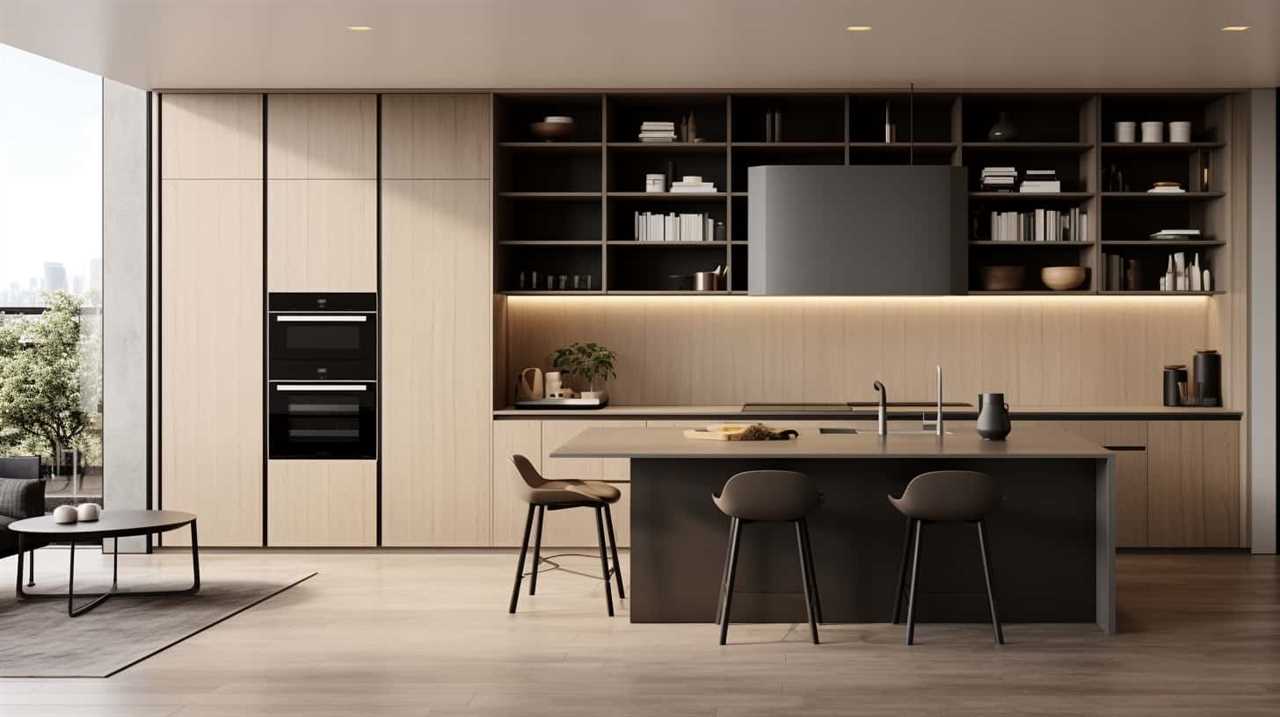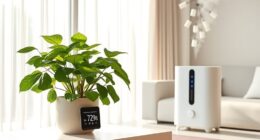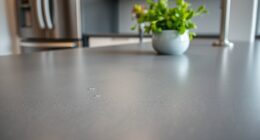Do appliances come included with the purchase of a house? This is a common question that comes up during the home buying process.
Understanding what appliances are included can have a significant impact on our budget and overall satisfaction with the purchase.
In this article, we will delve into the importance of clarifying appliance inclusions, explore the factors that determine what appliances are included, and provide tips on negotiating for the appliances we desire.
So let’s dive in and master the art of appliance acquisition!

Key Takeaways
- Clarifying appliance inclusions is important to avoid legal implications and ensure a smooth transaction.
- Review the seller’s disclosure document and conduct a thorough inspection of the appliances before finalizing the deal.
- Factors such as appliance warranty considerations, hidden costs, buyer’s preferences, and seller negotiations determine appliance inclusions.
- Commonly included appliances are energy-efficient appliances, easy-to-maintain appliances, water heater and HVAC systems.
Importance of Clarifying Appliance Inclusions
When purchasing a house, it’s crucial that we clarify the inclusions of appliances by asking the seller or the real estate agent. This step is essential to avoid any legal implications and ensure a smooth transaction.
The seller’s disclosure is a key document that provides information about the property, including the appliances that will be included in the sale. It’s important to carefully review this document, as it outlines the seller’s responsibility to disclose any known issues or defects with the appliances.
By clarifying the appliance inclusions, we can avoid any misunderstandings or disputes after the purchase. It’s also advisable to conduct a thorough inspection of the appliances before finalizing the deal, to ensure they’re in good working condition.
Taking these steps will help us make an informed decision and protect our interests as buyers.
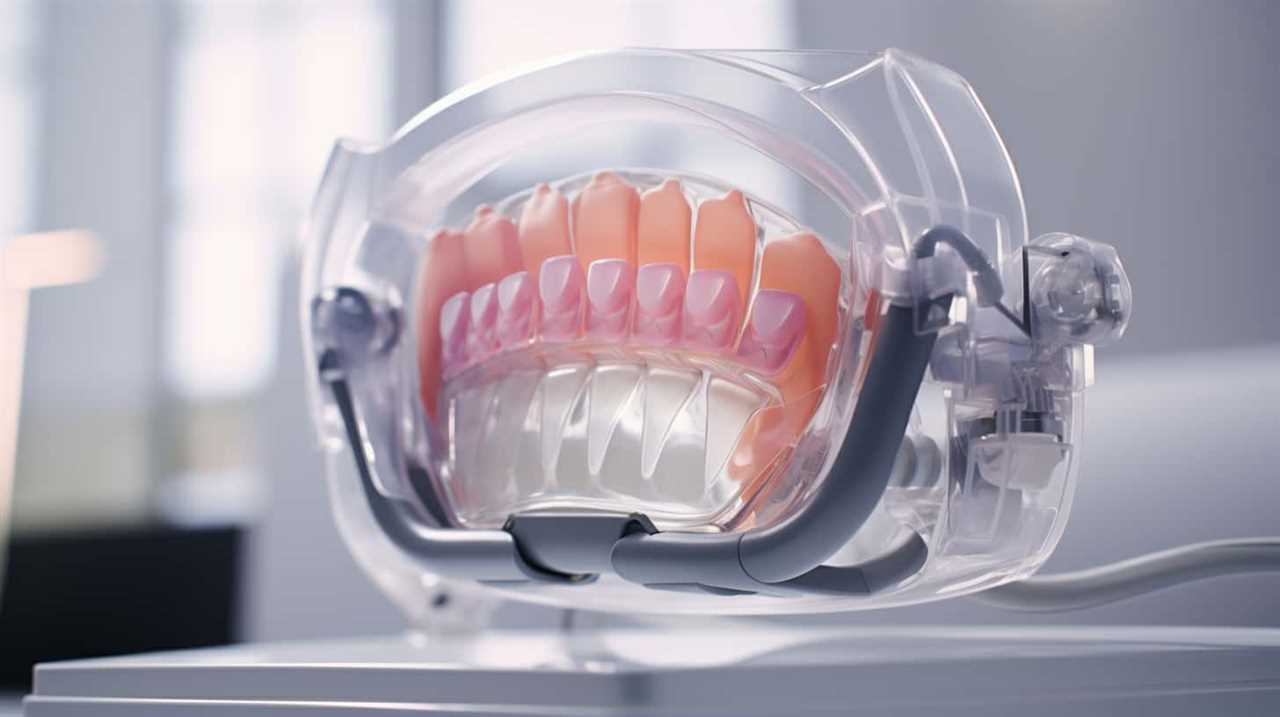
Factors That Determine Appliance Inclusions
After clarifying the appliance inclusions, we can now examine the factors that determine which appliances are included when buying a house.
When it comes to appliance inclusions, there are several important factors to consider:
- Appliance warranty considerations: One factor that plays a significant role in determining appliance inclusions is the warranty. Sellers may choose to include appliances with an existing warranty, as it adds value to the property and provides peace of mind to the buyer.
- Hidden costs of including appliances: While including appliances may seem like a great selling point, it’s important to consider the hidden costs. For example, older appliances may require repairs or replacements in the near future, leading to additional expenses for the buyer.
- Buyer’s preferences: Ultimately, the inclusion of appliances often depends on the buyer’s preferences. Some buyers may prioritize having all appliances included, while others may prefer to furnish their new home with their own appliances.
Considering these factors can help both buyers and sellers make informed decisions about appliance inclusions when buying a house.
Common Appliances Typically Included
Now let’s delve into the common appliances typically included when buying a house, taking into consideration factors such as appliance warranty, hidden costs, and buyer preferences.

When it comes to energy efficient options, many home buyers expect to find appliances that are designed to conserve energy and reduce utility bills. These may include energy star rated refrigerators, dishwashers, washing machines, and dryers.
Additionally, buyers often look for appliances that are easy to maintain and repair. Appliances such as stoves, ovens, and microwaves are commonly included in home purchases. These appliances are essential for cooking and are typically built to last.
Buyers also expect to find a water heater and HVAC system, which are necessary for maintaining a comfortable living environment.
It’s important to note that while these appliances are commonly included, it ultimately depends on the seller and the negotiations during the buying process.

Negotiating Appliance Inclusions
To negotiate appliance inclusions, we can start by considering the preferences of both the buyer and seller, as well as any potential additional costs or warranty considerations. Here are some negotiating strategies to keep in mind:
- Research the market: Understanding the value of the appliances you want included can give you leverage during negotiations.
- Prioritize: Identify the appliances that are most important to you and focus your negotiations on those.
- Offer alternatives: If the seller is unwilling to include certain appliances, suggest alternative solutions such as a reduced price or a credit towards purchasing new appliances.
When it comes to appliance warranties, it’s important to consider:
- Existing warranties: Check if the appliances have any remaining warranty coverage, which can provide peace of mind for both the buyer and seller.
- Extended warranties: Discuss the possibility of transferring or extending the warranties of included appliances to ensure protection against any potential issues in the future.
- Replacement costs: Assess the potential costs of repairing or replacing appliances without warranties, as this can help inform your negotiation strategy.
Alternative Options for Appliance Acquisition
What are some other ways we can acquire appliances if they are not included when buying a house? If you find yourself in a situation where appliances are not included in the purchase of a house, there are a few alternative options to consider. One option is to rent appliances. This can be a convenient solution, especially for those who are not planning to stay in the house for a long period of time. Another option is to purchase second-hand appliances. This can be a cost-effective choice, as you can often find appliances in good condition at a fraction of the original price. However, it is important to thoroughly inspect the appliances before purchasing to ensure they are in working order. Below is a table comparing the pros and cons of renting appliances versus buying second-hand appliances:
| Renting Appliances | Buying Second-Hand Appliances |
|---|---|
| Convenient | Cost-effective |
| No long-term commitment | Opportunity to negotiate price |
| May include maintenance and repairs | Potential for limited warranty |
| Limited choice | Possibility of outdated models |
Consider your needs, budget, and preferences when deciding which option is the best fit for you.

Frequently Asked Questions
What Are the Potential Consequences of Not Clarifying Appliance Inclusions Before Buying a House?
Potential disputes and misaligned buyer’s expectations can arise from not clarifying appliance inclusions before buying a house. It is crucial to clearly define which appliances are included to avoid future conflicts and ensure a smooth transaction.
Are There Any Legal Requirements Regarding Appliance Inclusions in Real Estate Transactions?
Legal requirements regarding appliance inclusions in real estate transactions vary by jurisdiction. Sellers are typically responsible for disclosing what appliances are included. Failure to clarify this can lead to disputes and potential legal consequences.
Can the Seller Remove Appliances That Were Initially Included in the Listing During the Negotiation Process?
During the negotiation process, the seller may attempt to remove appliances initially included in the listing. However, it is the seller’s responsibility to honor any agreements made, and the buyer has rights to enforce the inclusion of appliances.
Are There Any Additional Costs Associated With Including Appliances in the Purchase of a House?
When considering the inclusion of appliances in a home purchase, it’s important to be aware of potential additional costs. These costs can arise during the negotiation process and may impact the overall price of the house.

What Should Buyers Do if They Are Not Satisfied With the Appliances Included in the House They Are Purchasing?
When unsatisfied with the appliances included in the house we’re buying, we have options. We can negotiate with the seller for appliance upgrades or replace them ourselves after closing.
Conclusion
In conclusion, it’s crucial to clarify whether appliances are included when buying a house. Factors such as the seller’s motivation, market conditions, and the property’s location can determine appliance inclusions.
Typically, common appliances like refrigerators, stoves, and dishwashers are included. However, negotiating appliance inclusions is possible, and alternative options such as purchasing or leasing appliances separately can be explored.
Ultimately, understanding appliance inclusions can help buyers make informed decisions and avoid any unexpected surprises.
